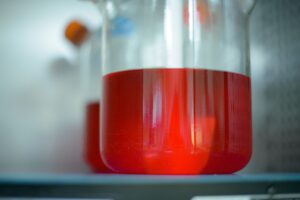Mastering Mammalian Cell Culture Maintenance: A Guide for Biomedical Researchers
In the realm of biomedical research, the cultivation of mammalian cells in vitro has revolutionized our understanding of cellular biology, disease mechanisms, and drug development. Mammalian cell culture maintenance lies at the heart of these endeavors, providing researchers with a platform to propagate cells in a controlled environment conducive to growth and experimentation. In this blog post, we delve into the fundamentals of mammalian cell culture maintenance, offering insights and tips for success in the laboratory.
Understanding Mammalian Cell Culture Maintenance
Mammalian cell culture maintenance involves the propagation of cells derived from animal tissues or cell lines in a laboratory setting. The process encompasses several key steps, including cell seeding, growth medium preparation, incubation, passaging, and quality control.
Essentials for Success
- Sterile Technique: Maintaining a sterile environment is paramount to prevent contamination and ensure the integrity of cell cultures. Use a laminar flow hood or biosafety cabinet for all manipulations involving cells, media, and culture vessels. Sterilize equipment, reagents, and surfaces regularly.
- Optimal Growth Conditions: Mammalian cells thrive under specific environmental conditions, including temperature, humidity, and CO2 levels. Most mammalian cell lines grow optimally at 37°C in a humidified atmosphere containing 5% CO2. Invest in a CO2 incubator to maintain these conditions consistently.
- Quality Growth Medium: Selecting the appropriate growth medium is crucial for supporting cell growth, viability, and functionality. Choose a medium supplemented with essential nutrients, vitamins, salts, and growth factors tailored to the specific requirements of the cell line being cultured. Fetal bovine serum (FBS) or serum alternatives provide vital components for cell proliferation.
- Regular Feeding and Monitoring: Cells require regular feeding with fresh growth medium to replenish nutrients and remove waste products. Monitor cell cultures closely for signs of confluence, pH changes, or morphological alterations indicative of cell health or stress.
Passage with Precision
Passaging, or subculturing, is the process of transferring cells from one culture vessel to another to maintain their exponential growth phase and prevent overcrowding. Follow these steps for successful passaging:
- Aspirate the spent medium and wash cells with phosphate-buffered saline (PBS) to remove residual serum and debris.
- Detach cells from the culture vessel using a suitable enzymatic (e.g., trypsin-EDTA) or non-enzymatic cell dissociation reagent.
- Resuspend cells in fresh growth medium and calculate the appropriate seeding density for the next passage to ensure optimal growth.
- Seed cells into new culture vessels and return them to the incubator for continued growth.
Troubleshooting Tips
Encounter challenges in your cell culture endeavors? Here are some common issues and troubleshooting strategies:
- Contamination: Identify the source of contamination (e.g., contaminated media, reagents, or equipment) and implement stringent aseptic techniques to prevent recurrence.
- Cell Aggregation or Clumping: Ensure thorough cell dissociation during passaging and maintain cells in single-cell suspension to prevent aggregation.
- Low Cell Viability: Optimize culture conditions, including medium composition, seeding density, and incubation parameters, to enhance cell viability and growth.
Conclusion
Mammalian cell culture maintenance is a cornerstone of modern biomedical research, enabling scientists to explore the intricacies of cellular biology and develop novel therapeutic strategies. By mastering the principles of sterile technique, optimal growth conditions, and precise passaging, researchers can cultivate healthy and robust cell cultures essential for advancing scientific knowledge and innovation in diverse fields.
In the quest for scientific discovery, meticulous attention to detail and continuous refinement of cell culture techniques are imperative. With dedication, expertise, and a commitment to excellence, researchers can harness the power of mammalian cell culture maintenance to unravel the mysteries of life and pave the way for groundbreaking discoveries that benefit humanity.
Having handled over 1,250 cell lines, trust our expertise with cell culture expansion. Contact us today to discuss how we can grow your research.

